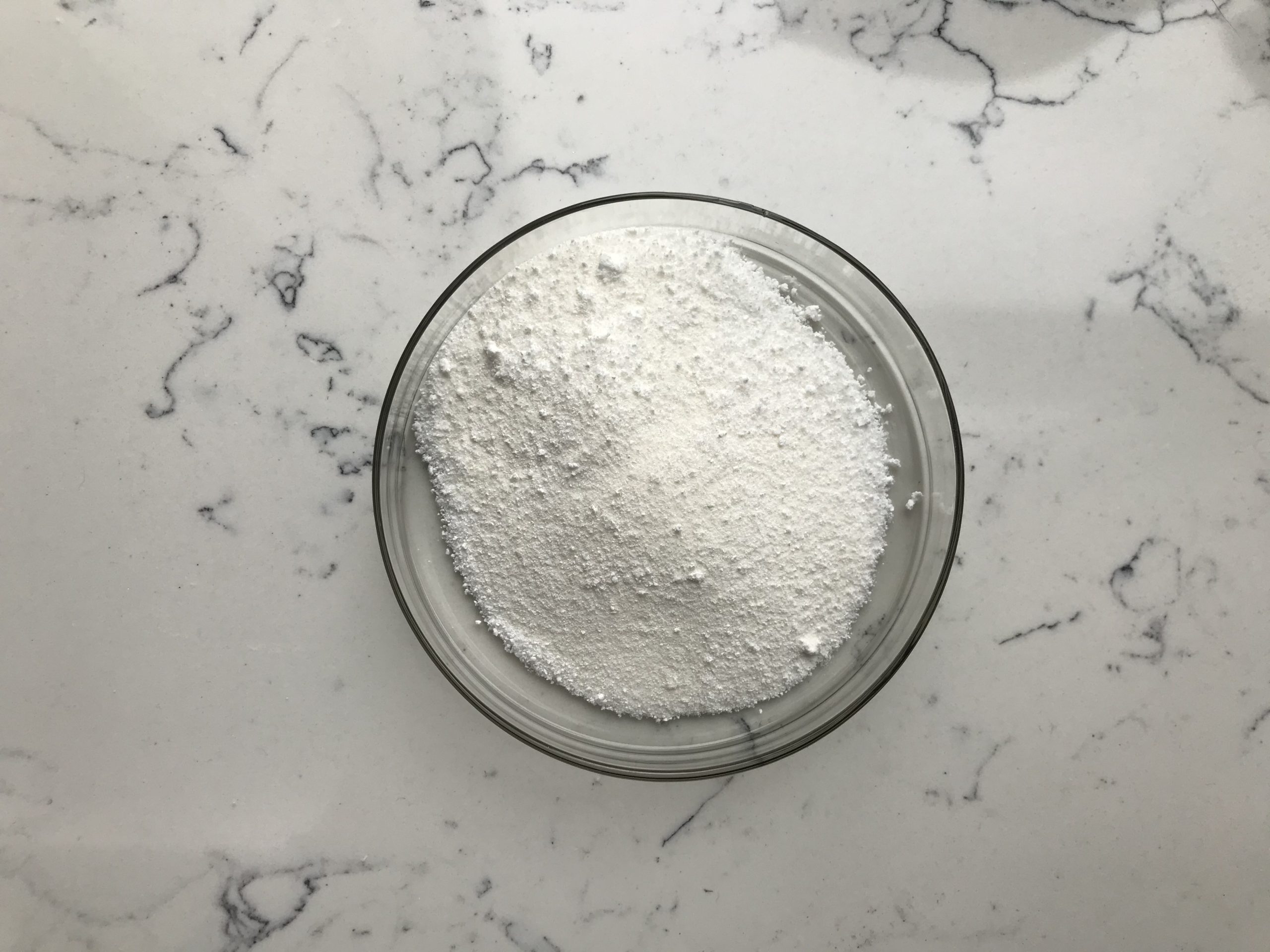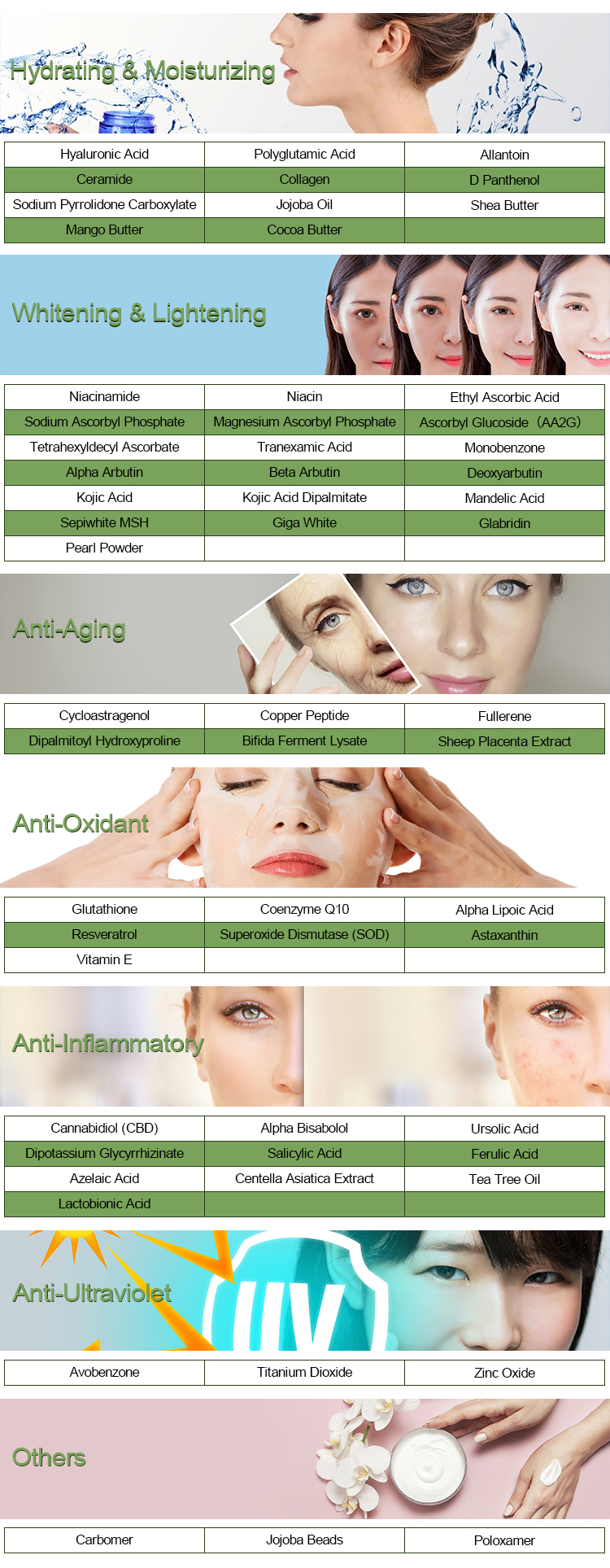Polyglutamic acid (PGA) is a naturally occurring biopolymer that belongs to the family of polyamino acids. It is composed of repeating units of the amino acid glutamic acid linked together through peptide bonds. Glutamic acid is one of the 20 standard amino acids that make up proteins in living organisms.Polyglutamic acid is produced by bacteria such as Bacillus subtilis through a fermentation process.
Polyglutamic acid has several notable properties and applications:
Biodegradability: Polyglutamic acid is biodegradable and environmentally friendly. It can be broken down by natural processes, which makes it a sustainable material.
Hygroscopic: It has strong water-absorbing capabilities, which makes it an effective moisturizing agent in skincare products.
Film-Forming: Polyglutamic acid can form a thin, transparent film on the skin’s surface, which helps to retain moisture and create a protective barrier. This film-forming property is utilized in various cosmetic and skincare products.
Cosmetic and Skincare Applications: Polyglutamic acid is commonly used in cosmetics and skincare products like serums, moisturizers, and masks due to its moisturizing and film-forming properties. It can help improve skin hydration and texture.
Medical and Pharmaceutical Uses: Polyglutamic acid is used in some medical and pharmaceutical applications. For example, it can be used as a drug delivery system to release drugs gradually within the body. It is also investigated for its potential in tissue engineering and regenerative medicine.
Food Industry: Polyglutamic acid has been used in the food industry as a food additive and thickening agent. It can be found in some processed foods and beverages.

Agriculture: In agriculture, Polyglutamic acid can be used as a biodegradable and non-toxic superabsorbent material for water retention in soil, which can help improve crop yields.
Water-Soluble: Polyglutamic acid is highly water-soluble, which makes it easy to incorporate into various formulations.
Polyglutamic acid has a wide range of applications due to its biocompatibility and water-retaining properties. Its use in cosmetics and skincare products, in particular, has gained popularity as it can help enhance skin hydration and appearance. However, it’s essential to ensure the quality and safety of Polyglutamic acid-containing products and consult with a dermatologist or skincare professional when considering their use on the skin.
How to use Polyglutamic Acid?
Polyglutamic acid (PGA) is a naturally occurring biopolymer that has gained popularity in the skincare and beauty industry due to its moisturizing and hydrating properties. It is often used as a skincare ingredient to improve skin hydration and elasticity. Here’s how to use polyglutamic acid in your skincare routine:
Choose a Product: Look for skincare products that contain polyglutamic acid. It is commonly found in serums, moisturizers, and hydrating masks. Ensure the product is from a reputable brand and contains a sufficient concentration of Polyglutamic acid.
Cleanse Your Face: Start by cleansing your face to remove any dirt, makeup, and impurities. Use a gentle, pH-balanced cleanser that suits your skin type.
Apply Toner (Optional): If you use a toner as part of your skincare routine, apply it after cleansing your face. A toner can help prepare your skin for better absorption of subsequent products.
Apply Polyglutamic Acid Product:
- Serums: If you’re using a polyglutamic acid serum, apply a few drops to your face and neck. Gently pat the serum into your skin with clean fingertips. Allow it to absorb before moving on to the next step.
- Moisturizers: If your moisturizer contains polyglutamic acid, apply it as you would any other moisturizer. Use a pea-sized amount and gently massage it into your skin.
Sunscreen (Morning Routine): If you’re applying polyglutamic acid in your morning routine, it’s crucial to follow up with a broad-spectrum sunscreen with at least SPF 30. Polyglutamic acid does not provide sun protection, and wearing sunscreen helps protect your skin from harmful UV rays.

Hydration Lock: Polyglutamic acid is known for its ability to lock in moisture, so it can be used alone or in conjunction with other hydrating and moisturizing products. It works well with hyaluronic acid and other hydrating ingredients.
Frequency: You can use polyglutamic acid daily or as often as needed, depending on your skin’s needs and the product’s instructions. Some people use it in both their morning and evening routines, while others use it once a day or a few times a week.
Patience and Consistency: Like most skincare products, the results from polyglutamic acid may not be immediate. It can take a few weeks of consistent use to see noticeable improvements in skin hydration and elasticity.
Adjust Your Routine: Pay attention to how your skin responds to polyglutamic acid. If you experience any irritation or discomfort, reduce the frequency of use or discontinue the product. Everyone’s skin is different, and it’s essential to find the right balance for your unique needs.
Consult a Dermatologist: If you have specific skin concerns or conditions, or if you’re unsure about how to incorporate polyglutamic acid into your skincare routine, it’s always a good idea to consult with a dermatologist for personalized advice.
Remember that polyglutamic acid is generally well-tolerated by most skin types, but it’s essential to be aware of your skin’s specific needs and any potential reactions to new skincare products.
